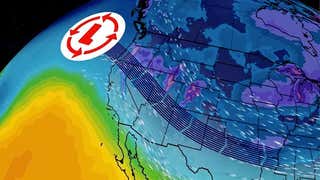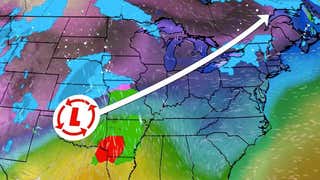

US
°C





Scientists are still trying to figure out what happened to all of the 172 million gallons of crude oil that spewed into the Gulf of Mexico after BP's Deepwater Horizon drilling rig exploded 41 miles off the Louisiana coast more than four years ago.
A large portion of that oil floated to the surface and washed ashore along the Gulf Coast, but an estimated 2 million barrels' worth never got that far. According to Grist, scientists suspected those 2 million barrels broke apart into microscopic droplets and stayed trapped deep beneath the surface of the ocean.
But no one had accounted for any of that missing spilled crude oil, until now. According to a new study by David Valentine published in the National Academy of Sciences on behalf of the federal government's ongoing damage assessment of the BP Oil Spill, up to 31 percent of that "missing" oil actually coagulated and settled on the bottom of the Gulf of Mexico like "a bathtub ring."
Only, this "bathtub ring" is more than 1,200 square miles in area, larger than Rhode Island, the Associated Press reports.
(MORE: Halloween Candy's Unfortunate Side Effect)
In order to come to that conclusion, Valentine and fellow researchers analyzed Gulf of Mexico sediment samples looking for concentrations of hopane, a chemical found in crude oil, Grist reports. The group found that not only did concentrations of hopane increase markedly in sediment samples closer to the well, but they also increased closer to the surface of the sediment, signaling a recent, abrupt addition to the sea floor akin to what would be expected during a cataclysmic spill like the April 20, 2010 incident.
Still, BP Oil spokesman Jason Ryan disagreed with the findings of the study, telling told NBC News that the findings were "grossly overstated."
"The authors failed to identify the source of the oil, leading them to grossly overstate the amount of residual Macondo oil on the sea floor and the geographic area in which it is found," Ryan said. "Instead of using rigorous chemical fingerprinting to identify the oil, the authors used a single compound that is also found in every natural oil seep in the Gulf of Mexico, causing them to find false positives all over the sea floor."
(MORE: Gonzalo Brings Big Changes to Bermuda's Waters)
Valentine said that it's "impossible" to do the chemical analysis Ryan mentions because the oil has broken down over the last four years. Valentine claims that the hopane-rich sediment on the sea floor is "a smokingly clear signal, like a bulls-eye" linking the oil on the bottom of the sea floor to the spill from the Macondo well, Grist notes. Indeed, concentrations of oil inside the "bathtub ring" were up to 10,000 times higher than those found outside the of the ring.
More research is needed on just what kind of environmental impact all of that oil had/is having on marine life on the ocean floor and what happened to the other portion of the deep sea oil that didn't settle on the sea floor, but Valentine's study lays the foundation for research projects to come.
MORE ON WEATHER.COM: BP Oil Spill
Vessels operate in the area of the Deepwater Horizon disaster on the Gulf of Mexico, Tuesday, July 13, 2010. BP officials have placed a containment cap over the leak in hopes that the flow of oil will be diminished. (AP Photo/Dave Martin)












